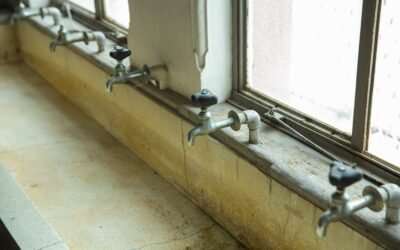Are you wondering if eggs with mold on the shell are safe to eat? In this article, we will provide you with the information you need to make an informed decision.
We will explore the potential risks of consuming moldy eggs, factors that can affect egg safety, and how to properly handle and prevent mold on egg shells.
By the end, you'll have a better understanding of whether it's safe to consume eggs with mold on the shell.
Key Takeaways
- Mold on egg shells indicates a breach in the protective barrier and potential contamination.
- Black or green mold may contain harmful toxins that can cause illness if ingested.
- Moldy eggs are more likely to be contaminated with bacteria like Salmonella or E. coli.
- Proper handling, storage, and cleanliness are essential to prevent mold growth and maintain egg safety.
Understanding Mold on Egg Shells
If you see mold on the shell of an egg, it's important to understand the potential risks associated with consuming it. Mold is a type of fungus that can grow on various surfaces, including the shells of eggs. While some types of mold are harmless, others can produce toxins that can cause illness if ingested. The presence of mold on an egg shell indicates that there may be a breach in the protective barrier, allowing the mold to grow on the surface. This breach could also allow bacteria to enter the egg, increasing the risk of foodborne illness.
The color and texture of the mold can provide some clues about its potential toxicity. Black or green mold, for example, may indicate the presence of certain toxins that can be harmful if consumed. Additionally, a slimy or fuzzy texture may suggest that the mold has been growing for some time, increasing the likelihood of toxin production.
To minimize the risk of illness, it's recommended to discard any eggs with mold on the shell. It isn't sufficient to simply remove the moldy part, as the toxins produced by the mold can potentially penetrate the egg. It's always better to err on the side of caution when it comes to food safety.
Potential Risks of Eating Moldy Eggs
When consuming eggs with mold on the shell, there are potential risks that you should be aware of. Mold growth on eggshells can indicate contamination, which may lead to foodborne illnesses. Mold produces toxins called mycotoxins, some of which can be harmful to human health. These toxins can cause a range of symptoms, including nausea, vomiting, abdominal pain, and diarrhea. In severe cases, they can even lead to organ damage.
Eggs with mold on the shell are more likely to be contaminated with bacteria such as Salmonella or E. coli. These bacteria can cause serious infections, especially in individuals with compromised immune systems, the elderly, and young children. It's important to note that washing the eggs or removing the moldy parts doesn't guarantee the elimination of these bacteria.
Furthermore, mold growth on the shell may indicate that the egg is old or has been stored improperly. Older eggs are more likely to harbor bacteria, and improper storage conditions can promote bacterial growth. Therefore, consuming moldy eggs increases the risk of bacterial contamination.
To minimize these risks, it's recommended to discard eggs with mold on the shell. It's better to be safe than sorry when it comes to your health.
Factors That Affect Egg Safety
To ensure the safety of eggs, it's essential to consider various factors that impact their quality and potential contamination. Eggs are highly perishable and can be easily contaminated if not handled properly. The following factors play a crucial role in egg safety.
- Storage temperature: Eggs should be stored at temperatures below 45°F (7°C) to prevent the growth of harmful bacteria. Refrigeration is the best way to maintain the freshness and safety of eggs.
- Handling and cleanliness: Proper handling and cleanliness are vital to prevent contamination. It's important to wash your hands thoroughly before and after handling eggs. Additionally, surfaces, utensils, and equipment that come into contact with eggs should be cleaned and sanitized regularly.
- Eggshell integrity: The shell acts as a protective barrier against bacteria. Cracked or damaged shells can allow bacteria to enter the egg, increasing the risk of contamination. It's best to discard eggs with cracked or damaged shells.
- Egg freshness: The freshness of an egg affects its safety. As eggs age, their quality deteriorates, and the risk of bacterial growth increases. It's recommended to check the expiration date and perform the float test to determine the freshness of an egg.
How to Properly Handle Moldy Eggs
To properly handle moldy eggs, it's important that you promptly and safely dispose of them to prevent any potential health risks. Mold on the shell of an egg indicates that there may be mold growth on the inside as well, which can lead to foodborne illnesses if consumed.
Follow these steps to handle moldy eggs safely:
- Wear gloves: Put on disposable gloves before handling the moldy eggs to avoid direct contact with the mold spores.
- Isolate the eggs: Place the moldy eggs in a sealed plastic bag or container to prevent the spread of mold to other foods or surfaces.
- Dispose of properly: Place the sealed bag or container with the moldy eggs in a trash bin or an outdoor compost bin.
- Clean and sanitize: Thoroughly wash your hands, gloves, and any surfaces that came into contact with the moldy eggs. Use hot, soapy water and a disinfectant to ensure proper sanitization.
Tips for Preventing Mold on Egg Shells
To prevent mold on egg shells, ensure proper storage conditions are maintained. Mold growth on egg shells can occur due to excess moisture and improper storage practices. Here are some tips to help you prevent mold from forming on your egg shells.
First, make sure to store your eggs in a cool and dry place. The ideal temperature for egg storage is around 40 degrees Fahrenheit (4 degrees Celsius). Avoid storing eggs near sources of heat or in direct sunlight, as this can increase moisture levels and promote mold growth.
Second, it's important to handle eggs with clean hands. Wash your hands thoroughly before handling eggs to prevent the transfer of bacteria or mold spores onto the shells. Additionally, avoid washing eggs before storage, as this can remove the protective coating that helps to prevent mold growth.
Third, check your eggs regularly for any signs of mold. Inspect the shells for any visible mold growth or discoloration. If you notice any moldy eggs, discard them immediately to prevent the spread of mold to other eggs.
Lastly, consider using an egg carton or container that allows for proper air circulation. This can help to reduce moisture buildup and prevent mold growth on the shells.
Conclusion
In conclusion, it isn't safe to consume eggs with mold on their shells. Mold can penetrate through the porous shell and contaminate the egg, potentially leading to foodborne illnesses.
Various factors, such as storage conditions and the type of mold present, can affect the safety of eggs. Proper handling and storage techniques can help prevent mold growth on egg shells.
It's recommended to discard eggs with visible mold to ensure food safety.






0 Comments